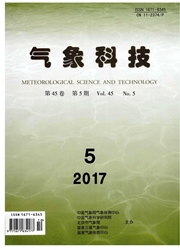

 中文摘要:
中文摘要:
利用天津武清雾综合观测资料,对一次强浓雾个例的形成、成熟到消散不同阶段边界层结构和微物理特征进行分析,同时进行了液氮消雾试验,观测雾微物理结构的变化响应。结果表明:近地面持续降温、暖平流水汽输送和深厚逆温是造成此次强浓雾的主要原因。雾滴谱拓宽具有爆发性发展特征。强浓雾平均谱在6μm出现峰值。液氮播人强浓雾期间,雾滴谱在11μm附近出现峰值,直径范围在8μm到21μm数密度增加明显,量级约高达10倍左右,而停止播撒液氮后谱型恢复与自然强浓雾雾滴谱一致,这与液氮的冰晶效应有关。
 英文摘要:
英文摘要:
The field experiments were conducted during a heavy fog event occurred in Tianjing on 30 November and 1 December 2009. The corresponding boundary layer and microphysical structure for the fog event are analyzed. Liquid Nitrogen (LN) was seeded into the heavy fog, and significant response was found after seeding. The results show that: cooling near the ground, warm advection of water vapor transmission, and deep inversion are the main causes of the strong fog. The broadening of droplet spectral is of explosive development characteristic. Average spectrum peaked at 6, 14, and 22μm in diameter, respectively. Liquid nitrogen was seeded into the heavy fog, and the fog droplet spectral peak appeared near ll μm. The number concentration increased significantly in the diameter range of 8 to 21 μm, with the order of magnitude of about 10 times higher, which is related to the ice crystal effect of liquid nitrogen.
 同期刊论文项目
同期刊论文项目
 同项目期刊论文
同项目期刊论文
 期刊信息
期刊信息
